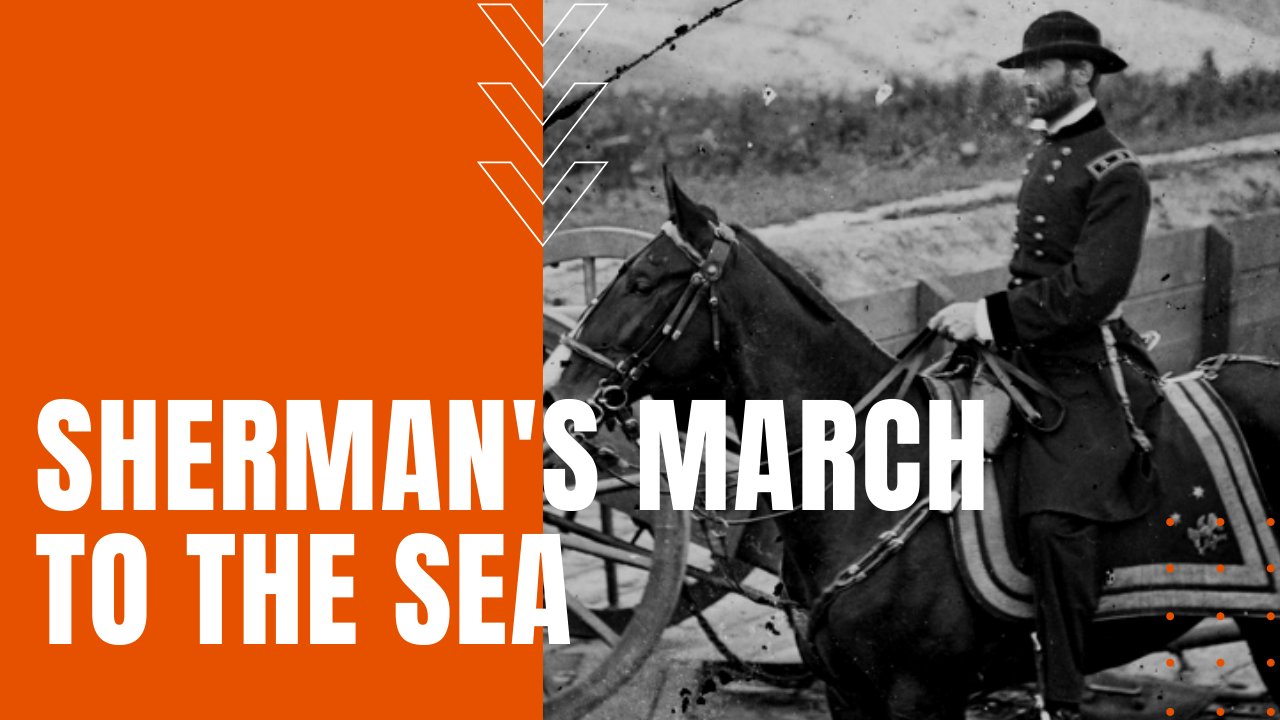Sherman’s March to the Sea

In an early example of psychological warfare, after Union General William Tecumseh Sherman’s army capture the Confederate industrial hub of Atlanta on September 2nd, 1864, the storied general set out to break the will and morale of Southern civilians, intending to make life so unpleasant for Georgians that they would demand an end to the war.
To that end, Sherman sent Major General George Thomas and some 60,000 Union soldiers to face off with the Confederates at Nashville, while Sherman led his 62,000 remaining men through Georgia to Savannah, “smashing things,” he wrote in his diary, “to the sea.” Sherman’s forces split into two columns some 30 miles apart, skirmishing with a 3,500-man Confederate cavalry division on November 22nd, which saw 650 Confederate soldiers killed or wounded, compared to Union casualties of 62. This inspired all Confederate forces in the area to sidestep both Union lines in the future, fleeing from Sherman’s men employing a scorched earth tactic of burning barns that held Confederate provisions.
How Did Sherman’s March to the Sea Affect the South?
Sherman’s men, in turn, wreaked havoc on farms and plantations, confiscating food stocks and supplies to support their march toward Savannah. “It isn’t so sweet to secede,” one Yankee soldier wrote home, while South Carolinian Mary Boykin Chestnut wrote in her diary,
“Since Atlanta, I have felt as if we are going to be wiped off the earth.”
Mary Boykin Chestnut
Sherman’s terror squads reached Savannah on December 21st, 1864—nearly a month after departing Atlanta—finding the coastal city undefended after the departure of some 10,000 Confederate troops who fled the city in advance of Sherman’s arrival.
Sherman’s “total war” policy proved to be brutal and destructive throughout his campaign, yet his strategy proved decisive in breaking Southern morale and most likely hastened the end of the American Civil War.
One of Sherman’s subordinates in the campaign wrote that their goal was to “produce among the people of Georgia a thorough conviction of the personal misery which attends war, and the utter helplessness and inability of their ‘rulers’ to protect them.”
By early 1865, Sherman’s forces had pillaged and burned their way across South Carolina to Charleston, until his march to the sea ended in April, when Confederate General Robert E. Lee surrendered to Union commanding General Ulysses S. Grant at Appomattox Court House Virginia, ending a four-year, bloody conflict that took the lives of 620,000 American fighting men.
